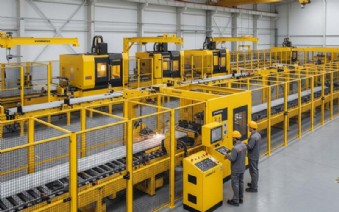-

Company
Product
ALUMINIUM MACHINES
PORTABLE MITER SAWS FOR ALUMINUM
PORTABLE COPY ROUTER MACHINES FOR ALUMINIUM
PORTABLE END MILLING MACHINES FOR ALUMINIUM
AUTOMATIC MITER SAWS FOR ALUMINIUM
COPY ROUTER MACHINES FOR ALUMINIUM
END MILLING MACHINES FOR ALUMINIUM
ALUMINUM CORNER CRIMPING MACHINE
DOUBLE MITRE SAWS FOR ALUMINIUM
AUTOMATIC SAWS FOR ALUMINIUM
BAR PROCESSING CENTERS
MACHINING CENTERS FOR ALUMINIUM COMPOSITE PANELS
NOTCHING SAWS
WEDGE CUTTING SAWS AND NOTCH CUTTING SAWS
MITER SAWS FOR ALUMINIUM
PVC PLASTIC MACHINES
PORTABLE MITER SAWS FOR PLASTIC
PORTABLE COPY ROUTER MACHINES FOR PLASTIC
PORTABLE END MILLING MACHINES FOR PLASTIC
MITER SAWS FOR PLASTIC
COPY ROUTERS FOR PLASTIC
END MILLING MACHINES FOR PLASTIC
WELDING MACHINES FOR PLASTIC
CORNER CLEANING MACHINES FOR PLASTIC PROFILES
DOUBLE MITRE SAWS FOR PLASTIC
BAR PROCESSING CENTERS
GLAZING BEAD SAWS
AUTOMATIC MITRE SAWS FOR PLASTIC
METAL MACHINES
MANUAL METAL SHEET BENDING MACHINE
MANUAL BENDING MACHINES
HYDRAULIC BENDING MACHINES
NON MANDREL BENDERS
PLATE BENDING MACHINES
BORDERING AND TRIMMING MACHINES
HORIZONTAL PRESSES
BELT GRINDING MACHINES
PIPE NOTCHING MACHINES
PIPE POLISHING MACHINES
LASER CUTTING MACHINES
PRESS BRAKES
VERTICAL TURNING CENTERS
MACHINING CENTERS
WOOD MACHINES
GLASS MACHINES
ROBOTICS SPECIAL MACHINERY
Service
Blog
Contact
Blog
- Home
- Blog
- BAR MACHINING CENTERS
- PROFILE PROCESSING LINES
PROFILE PROCESSING LINES

Profile Processing Lines – Efficiency, Automation and Future Security in Profile Manufacturing
Introduction: Why Profile Processing Lines Are Becoming More Important
Profiles made of aluminium, plastic and steel are essential components in modern industry. They are used in window and door construction, façade systems, mechanical engineering, automotive, furniture and lightweight structures. To cut, drill, mill, punch, or assemble these profiles with precision, powerful systems are required.
This is where profile processing lines come into play. They represent the evolution of standalone machines by combining multiple operations into a fully automated production line.
What Is a Profile Processing Line?
A profile processing line is a highly automated system that integrates multiple machining processes. It typically includes:
-
Feeding systems for profiles up to 20 m.
-
Sawing units for mitre and length cuts.
-
CNC machining centres for drilling, milling, slotting, threading.
-
Punching and notching stations.
-
Deburring units.
-
Transport and conveyor systems.
-
Automatic unloading and stacking.
The goal: a continuous production flow from raw bar to finished part, with minimal manual intervention.
Typical Functions
-
Sawing – accurate length or mitre cuts.
-
Drilling – mounting holes, pass holes, multiple holes in one cycle.
-
Milling – grooves, contours, pockets, recesses.
-
Punching and notching – for connectors, welding prep, fixings.
-
Thread cutting – direct screw connections in aluminium or steel.
-
Deburring – clean edges for assembly and appearance.
-
Transport – automated feed and removal.
Advantages
-
Productivity: multiple steps in one line → shorter cycle times.
-
Precision: CNC accuracy within hundredths of a millimetre.
-
Automation: fewer manual tasks, greater process safety.
-
Material savings: optimised cutting plans reduce waste.
-
Flexibility: usable for aluminium, plastic and steel.
-
Profitability: quick payback due to high utilisation.
Applications
-
Windows: frames and sashes.
-
Doors: frame and hinge profiles.
-
Façades: structural and connecting profiles.
-
Automotive: lightweight chassis and body elements.
-
Mechanical engineering: special machine profiles.
-
Furniture: frames and modular systems.
Technology in Detail
-
CNC control: CAD/CAM import, storage of cutting programs, real-time monitoring.
-
Automation: robotic loading/unloading, tool changers, sensors.
-
Cooling/chip removal: minimum lubrication (MQL), extraction and conveyors.
Profile Processing Lines vs. Standalone Machines
Previously: multiple machines, lots of manual handling.
Now: a single processing line replaces several machines → faster, safer, more efficient.
Economic Significance
-
ROI: payback within a few years.
-
Productivity increase: up to +70%.
-
Competitive advantage: shorter lead times, higher quality.
Future Outlook
-
IoT integration for real-time monitoring.
-
AI optimisation for cutting and process planning.
-
Digital twins for full simulation.
-
Green manufacturing with efficient drives and recycling.
Conclusion
Profile processing lines are a key technology for modern industry. They combine efficiency, precision, automation and sustainability, securing clear competitive advantages for companies that invest in them.
- profile processing line
- profile processing lines aluminium
- profile processing lines plastic
- profile processing lines steel
- cnc profile processing line
- automatic profile processing line
- profile processing line for windows
- profile processing line for doors
- profile processing line for façades
- profile processing line for mechanical engineering
- profile processing line for furniture
- profile processing line for automotive industry
- profile processing line new
- profile processing line used
- profile processing line evomatec
- profile processing line industry 4.0
- profile processing line precision
- profile processing line efficiency
- profile processing line cnc technology
 GERMANY
GERMANY ENGLISH
ENGLISH FRANCE
FRANCE SPAIN
SPAIN PORTUGAL
PORTUGAL








